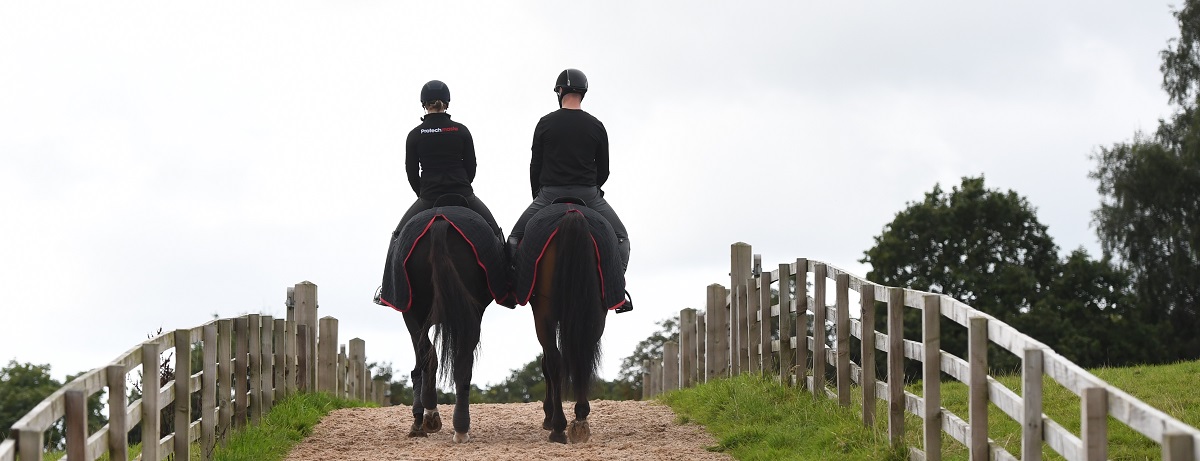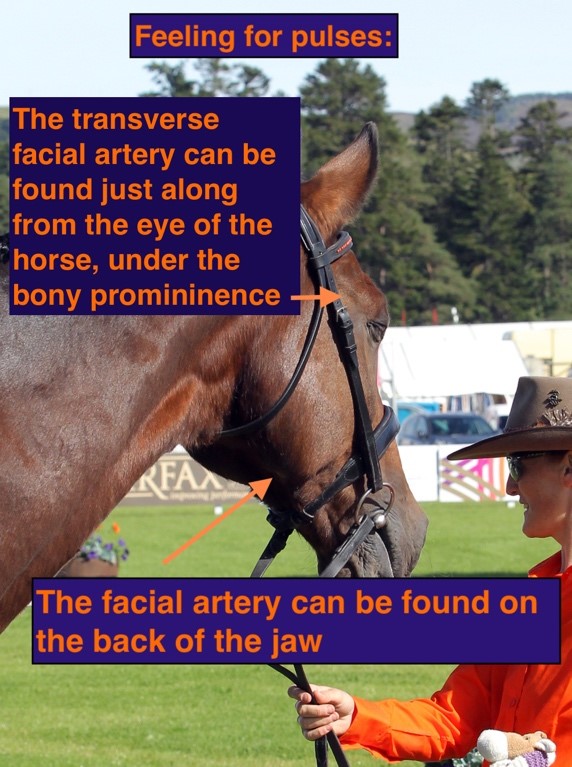
Welcome to this guest blog from Caroline Mosley, Lecturer in Veterinary Clinical Skills at the University of Edinburgh and the face behind Orange Fox Eventing. In this blog we’re going to asses the heart rate of a horse, read on to know what a normal heart rate is in horses and how to take the pulse.
As an owner of a horse it is useful to be familiar with your horse’s vital signs. You can use this assessment to regularly check your horse and understand what their normal signs are. If you feel your horse is unwell, being able to carry out a vital signs’ assessment will help you provide your vet with useful information on what is normal and what is not. Vital signs for a horse include heart rate, respiratory rate, temperature, capillary refill time, colour of mucous membranes and hydration. Gut sounds are also useful to assess in the horse, becoming familiar with how active your horses’ gut is will be helpful – you’ll then know what sounds normal and what doesn’t!
To be able to carry out an assessment of these signs you will need:
- Stethoscope
- Thermometer
- Timer
A horse’s heart rate
A horse cannot control their heart rate. Like humans, they cannot raise their heart rte on purpose, their body controls this. Being able to take a horse’s heart rate will provide you with information on what their resting heart rate is and thus what is normal for them. You can measure how quickly it returns to normal when assessing fitness and you can measure it to see if your horse is in pain at a time of colicing.

How to measure a horse’s heart rate
To assess the heart rate of a horse, you can take their pulse or use your stethoscope to listen directly to the heart. Both of these steps require a bit of practice to find the correct location but once you have been doing this for a while you will easily locate it.
To obtain a heart rate you need to stand the horse with their left foreleg, slightly forward. Place the stethoscope on the chest behind the point of the elbow. You may not hear anything, so move the stethoscope around slightly to find the correct spot.
A normal heart rate is around 30 – 42 beats per minute (bpm) at rest (it’s higher in foals). A heart rate in a resting horse that is above 60 would be considered a concern and would need investigation by a vet.
As the heart rate in a horse is much slower, it will sound different to a human. We listen for “lub-dub” in people but it a horse it sounds more like “b-lub dub-de”. Watch this video for a useful tool to understand how to listen to a horse’s heart and for getting to grips with an normal and abnormal rhythm
How to take a horse’s pulse

If taking a heart rate is tricky then you can obtain the rate by taking the pulse instead. I prefer to use a stethoscope as the horse doesn’t need to keep their head still while I’m listening. Taking a pulse means finding one of the pulses and counting the pulsing over 30 seconds to a minute. The facial pulse can be found on the back of the jaw and the transverse facial artery is located just along from the eye in line with the bony prominence (zygomatic arch). You do need the horse to keep their head still and not be eating so some do not tolerate this!
To feel a pulse, you need to gently place a couple of fingers on it to lightly press it so that it pulses under your fingers. It can be very tricky to find a pulse so if you struggle, next time the vet is out, ask them to help you find it on your horse. You can find pulses in other locations but to take a reading, the two mentioned above are the two easiest ones to find.
Read the next blog about temperature, hydration and gut sounds here.
Thank you for reading
Caz Mosley BSc, RVN, C&GCertVNES, DipMgmt (Open), BHS CCH, PgCAP, SFHEA
